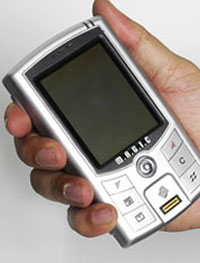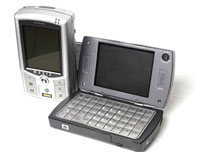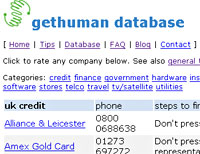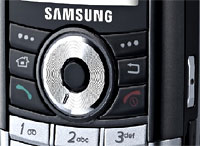 If you thought the switchover to digital television was going to be a challenge, spare a thought for the regulators, policy makers and engineers who are already tasked with trying to figure out the best way of re-allocating the spectrum freed up by switching off the analogue broadcasting signal.
If you thought the switchover to digital television was going to be a challenge, spare a thought for the regulators, policy makers and engineers who are already tasked with trying to figure out the best way of re-allocating the spectrum freed up by switching off the analogue broadcasting signal.
There are a multitude of possible new uses for the spectrum released by switchover, including re-allocating (or re-gifting) it back to the very broadcasters who previously used it in order for them to deliver HD and other services.
Mobile providers are also launching a campaign to ensure an allocation for mobile TV over DVB-H, or extending 3G and rolling out mobile broadband services. Some countries may even look to allocate the spectrum to defence and/or emergency service uses. Or it could well be a mix of all of the above – although the resource is finite – hence the issue.
It was this re-allocation process that provided the focus for an event run today by Policy Tracker. Unfortunately, I was only able to attend the first couple of sessions – but the roster of speakers for the day looked very strong indeed. I hope that Policy Tracker will look to do more events, if they are of this calibre.
 The first two sessions focused mainly on the problems associated with harmonisation. It is essential that adjoining states will have to work together to allocate spectrum, if there are not to be interference issues. The ITU’s Regional Radiocommunication Conference (RRC-06) which will be held in Geneva between May 15 and June 16, aims to provide the necessary regulatory framework for national regulators such as Ofcom as they look to re-allocate. This framework will not limit or determine the re-allocation but ensure licence holders meet certain requirements to ensure harmonious use – enforced by national regulators.
The first two sessions focused mainly on the problems associated with harmonisation. It is essential that adjoining states will have to work together to allocate spectrum, if there are not to be interference issues. The ITU’s Regional Radiocommunication Conference (RRC-06) which will be held in Geneva between May 15 and June 16, aims to provide the necessary regulatory framework for national regulators such as Ofcom as they look to re-allocate. This framework will not limit or determine the re-allocation but ensure licence holders meet certain requirements to ensure harmonious use – enforced by national regulators.
It was interesting to note that London’s geographical location – and possible interference in parts of France and Holland – will mean that any allocation for DVB-H services will effectively have to wait until 2012. Ofcom have already stated this – but pressure will surely start to mount when other European cities (where there are no associated interference issues) will start rolling out DVB-H mobile TV starting in 2007.
Interesting comments from Roberto Ercole of the GSM Association, who said that mobile providers were currently unsure about how the reallocation process would work. He said that the industry faced three key issues – regulatory uncertainty, not knowing whether mobile TV would come under the same regulations as broadcasting, and the possible fragmentation of markets due to allocations differing across regions.
 Of course regulatory uncertainty is same for all those looking to unlock the digital dividend (although some argue that the broadcasters are well positioned because they already sit on the spectrum). Whatever happens its going to be a complex and highly political interplay between policy makers, regulators and transnational organisations such as the ITU.
Of course regulatory uncertainty is same for all those looking to unlock the digital dividend (although some argue that the broadcasters are well positioned because they already sit on the spectrum). Whatever happens its going to be a complex and highly political interplay between policy makers, regulators and transnational organisations such as the ITU.
There is a very difficult balance to strike, ensuring that there is enough incentive for potential users to keep investing and developing technologies whilst also ensuring that the released spectrum will be used in the most productive and efficient manner.
A particularly pertinent question from one delegate – that didn’t get an answer – what is that citizen/consumers will get from the re-allocation? Afterall it is citizen/consumers who are effectively having to pay to release the spectrum. Ofcom’s initial proposals on the issue suggest that this is a question that they will look to answer – so we’ll wait and see.
 Currently hovering betwixt prototype and retail status, Advance Tech Communications new Windows Mobile smartphone market looks hot! hot! hot!
Currently hovering betwixt prototype and retail status, Advance Tech Communications new Windows Mobile smartphone market looks hot! hot! hot! On board storage is taken care of courtesy of a generous 8GB hard disk, backed up by 512MB RAM and 512MB ROM, with a micro-SD expansion card slot.
On board storage is taken care of courtesy of a generous 8GB hard disk, backed up by 512MB RAM and 512MB ROM, with a micro-SD expansion card slot. Instead, the company are proclaiming their new device to be a “laptop computer miniaturised to the size of a handheld device,” which perhaps isn’t the snappiest description they could have come up with.
Instead, the company are proclaiming their new device to be a “laptop computer miniaturised to the size of a handheld device,” which perhaps isn’t the snappiest description they could have come up with. The London book fair, just finished. At it, there was no sign of an e-book reader from Microsoft – which is odd, because all the stuff Microsoft has been teasing us about with
The London book fair, just finished. At it, there was no sign of an e-book reader from Microsoft – which is odd, because all the stuff Microsoft has been teasing us about with  Nokia has launched Nokia Lifeblog 2.0, an updated version of their photo-blogging offering.
Nokia has launched Nokia Lifeblog 2.0, an updated version of their photo-blogging offering. Well, that’s how we’d describe the process, but Nokia has a more flowery interpretation, insisting that adding the extra information is “rendering them as part of the rich tapestry of items that make up your personal Nokia Lifeblog timeline.”
Well, that’s how we’d describe the process, but Nokia has a more flowery interpretation, insisting that adding the extra information is “rendering them as part of the rich tapestry of items that make up your personal Nokia Lifeblog timeline.” “With imaging becoming an integral part of mobile devices, the way people approach photography is changing. You are able to capture events and create memories in a spontaneous way as your device is always with you,” gushed Mikko Pilkama, whose job title is surely unpronounceable after five beers: Director, Nokia Nseries See New, Multimedia, Nokia.
“With imaging becoming an integral part of mobile devices, the way people approach photography is changing. You are able to capture events and create memories in a spontaneous way as your device is always with you,” gushed Mikko Pilkama, whose job title is surely unpronounceable after five beers: Director, Nokia Nseries See New, Multimedia, Nokia. “Press one if you’re a
“Press one if you’re a  Here’s some example entries from the ‘gethuman’ UK database – obviously, we haven’t tested them all, but initial reports have been encouraging, but tell us how you got on.
Here’s some example entries from the ‘gethuman’ UK database – obviously, we haven’t tested them all, but initial reports have been encouraging, but tell us how you got on. With a bonkers new naming strategy that suggests the creatives may have been on something stronger than caffeine, Orange have launched a new tariff that links customer behaviour with animal characteristics.
With a bonkers new naming strategy that suggests the creatives may have been on something stronger than caffeine, Orange have launched a new tariff that links customer behaviour with animal characteristics. Initially launching to Pay Monthly customers, the animal packages will be made available to Pay as you go customers later in the year.
Initially launching to Pay Monthly customers, the animal packages will be made available to Pay as you go customers later in the year. Seiko Instruments has announced their first Bluetooth watch, known as either the BT Watch or the rather less snappy, CPC TR-006 ver.1.0.
Seiko Instruments has announced their first Bluetooth watch, known as either the BT Watch or the rather less snappy, CPC TR-006 ver.1.0. If you get an SMS or email on your phone the watch can alert you, and if your phone’s ringing, you won’t have to rummage about in your bag or pockets to see who is calling – the number will appear on the watch.
If you get an SMS or email on your phone the watch can alert you, and if your phone’s ringing, you won’t have to rummage about in your bag or pockets to see who is calling – the number will appear on the watch. Now, much as we like the idea of cool high tech toys buzzing away on our wrists, we have to say that this watch looks more than a bit silly – it’s so big you may as well strap your mobile onto your wrist and be done with it!
Now, much as we like the idea of cool high tech toys buzzing away on our wrists, we have to say that this watch looks more than a bit silly – it’s so big you may as well strap your mobile onto your wrist and be done with it! We reckon it would be cool to have text messages, news headlines, RSS feeds, football scores and other short bursts of info appear on your watch – particularly when you’re stuck in a dull meeting.
We reckon it would be cool to have text messages, news headlines, RSS feeds, football scores and other short bursts of info appear on your watch – particularly when you’re stuck in a dull meeting. Samsung has announced the world’s first 8GB Hard Disk embedded smartphone, the SGH-i310, which is expected to start shipping in Europe during the second half of this year.
Samsung has announced the world’s first 8GB Hard Disk embedded smartphone, the SGH-i310, which is expected to start shipping in Europe during the second half of this year. The smartphone seems pretty pocketable too, measuring 111.9 x 48.5 x 19.8 mm and weighing 120g.
The smartphone seems pretty pocketable too, measuring 111.9 x 48.5 x 19.8 mm and weighing 120g. The story we’ve
The story we’ve  Now to us here at Digital Lifestyles, this threatened action seems to have a bit of a King Canute/70’s vibe about it. The truth of the matter, is that the competitive landscape has changed in telecommunications and broadcasting. BT is answerable to their city shareholders, and a move to tackle some of the entrenched attitudes within the company’s workforce might be looked on favourably by the number crunchers around the London stock exchange.
Now to us here at Digital Lifestyles, this threatened action seems to have a bit of a King Canute/70’s vibe about it. The truth of the matter, is that the competitive landscape has changed in telecommunications and broadcasting. BT is answerable to their city shareholders, and a move to tackle some of the entrenched attitudes within the company’s workforce might be looked on favourably by the number crunchers around the London stock exchange.